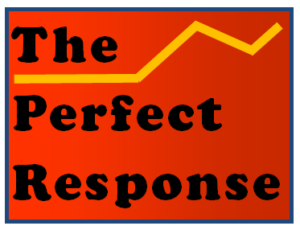Charles Dickens started a novel with the famous lines, “It was the best of times. It was the worst of times.” That binary is much more than a clever rhetorical device.
 As people in my line of work are fond of saying, ‘language sometimes does our thinking for us.’ Word choices are tracks that inevitably point us in specific directions. So when we talk about “media”—because it is a plural term—we are primed to acknowledge significant differences between individual outlets. That’s as it should be, and a way of thinking we need remember when we are acting on the basis of any single version of events. In our present circumstances, we may dealing with one virus, but a nearly infinite number of accounts about how we have been affected.
As people in my line of work are fond of saying, ‘language sometimes does our thinking for us.’ Word choices are tracks that inevitably point us in specific directions. So when we talk about “media”—because it is a plural term—we are primed to acknowledge significant differences between individual outlets. That’s as it should be, and a way of thinking we need remember when we are acting on the basis of any single version of events. In our present circumstances, we may dealing with one virus, but a nearly infinite number of accounts about how we have been affected.
For most of us, the concept of a “story” could not be clearer, setting up an expectation that we will take in a running version of events that can stand on its own. This is all well and good if we are talking about one individual’s experiences. We are all entitled to our stories. They function to make life understandable and meaningful. They are also useful barometers of our own mental states.
Narrative fiction and films have our attention because they fulfill what we seem hardwired to need: figures to empathize with, and the continuity and simplicity of a single of perspective. This is the rhetorical form of the synecdoche: when one example stands in for a whole class of people or events.
Human events usually contain multiple and contradictory stories.
The mistake is when we accept the adequacy of singular form as a tool for understanding the real world. The cable-news anchorperson asks a reporter in the field, “What’s the story?” A headline launches a short version of events usually defined by its internal coherence. An editor or producer presses a reporter to find a single experience that encapsulates a larger trend. As news consumers we are attracted to narrative continuity over reports that ask us to consider “competing realities.” Complexity tends to get written out of accounts that need to be boiled down to one and half minutes of air time or 600 words of reporting.
But in actual fact, human events usually contain multiple and contradictory stories: accounts that are often diverse in their details and frequently inconsistent with each other. We easily recognize this when we compare notes with family or friends about key events that we’ve shared about some earlier experiences of our ancestors. We expect to add details another missed, or to add alternative interpretations of a participant’s motives, or to pass on an observation that is completely new to others. In those settings we are not surprised to learn that one version of events is not enough. Eventually all the pieces put together form a kind of intersubjective truth that works at least for those who participated.
The same is true in the current news environment beyond the current pandemic. The forever conflict between the state of Israel and Palestinians living on its borders does not permit the luxury of one narrative, but many. The checkered 10-year history of the Affordable Care Act cannot be contained in one personal experience. We know there must have many, reflecting the range of responses by individuals and the states where they reside. Even when we think we have some clarity, we can easily be surprised by long-form accounts that can force us out of what seems like a settled narrative.
We are smarter if we expect that news reports and other kinds of nonfiction accounts should come to us in uneven waves. In terms of conventional communication analysis, we usually look for a “preferred narrative:” the kind of account that comes from official sources and takes hold of the popular imagination. But we also expect to find that there are “alternate” or “counter-narratives” as well, and often a series of them. These may come from the less powerful or the marginalized who were caught up in the same event. It’s not unusual that years later they emerge as the new preferred narratives.
Charles Dickens started A Tale of Two Cities with the famous lines, “It was the best of times. It was the worst of times.” The thought reflects his savvy as a narrator of the human condition. We need to expect that there may be a plurality of perspectives that will undermine the coherence and psychological comfort that comes with a single account. “Reality” is often best represented in a Venn diagram of overlapping accounts. We need to remind ourselves to be impatient if reporting about human events seeks an unearned consensus by insisting on a single truth.
![]()

